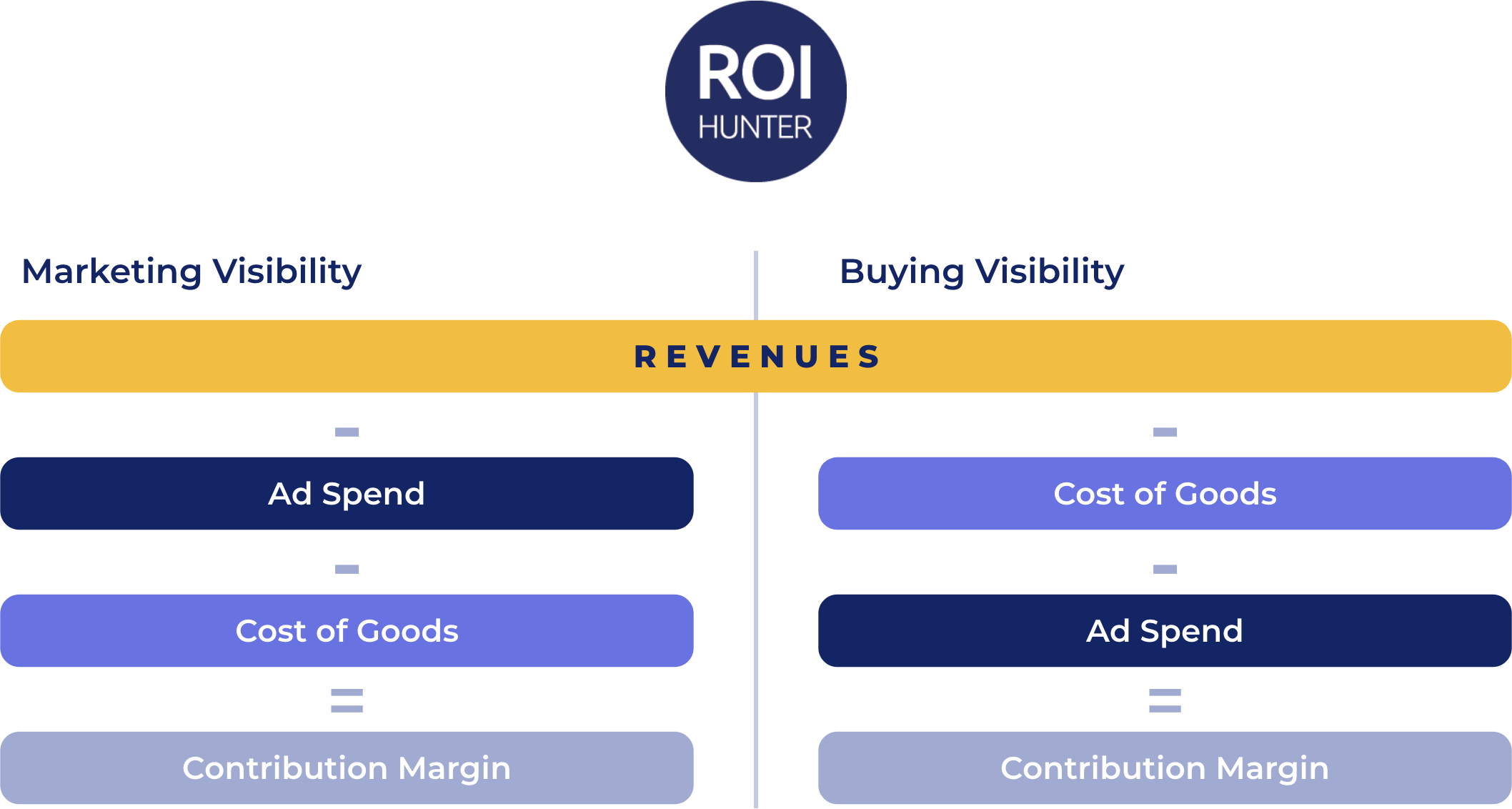Call a meeting. Talk to people in your company. Ask your co-workers what ONE thing they think is the biggest factor blocking company growth. What did they say? Chances are it was access to data or misalignment between departments.
When your marketing team puts a campaign together, are they basing the promotion on current data, detailing which products would perform best, and helping them optimise toward true profit? When your category manager places a reorder, are they factoring in the actual marketing performance of each individual product (e.g. analysing the adspend behind the specific product to determine how difficult it was to sell?).
In almost every case we’ve seen, the answer is no. There is not enough alignment and data-sharing between departments to be able to make such data-driven decisions.
What's the Problem?

Most retailers work with siloed data. Why?
There are a few possible reasons. One has to do with the culture of the company. Do teams work together, or do they work in isolation? Oftentimes, some departments begin to see themselves as separate from the overall organization, which prevents the regular flow of data.
It could be an organizational issue. Perhaps the departments in the company would love to be more aligned, but the company lacks the hierarchical structure needed to keep them in regular communication.
Most commonly, it’s a technological issue. Departments within a company often use different tools, and these tools don’t always speak to each other - (especially when considering the marketing platforms and tools used by category managers or merchandising teams). The result is that marketing teams and buying teams have different visibility on the data, resulting in different interpretations of how the contribution margin/profit should be calculated.
Essentially, marketing teams don’t know the purchase price of every product, and purchasing teams don’t know the ad spend behind the sale of every product.

Why Does it Matter?
Is it really such a big deal to lack product-level performance data? Yes. Yes it is. Most marketers would agree: 87% think data is the most underutilised resource in their company.
Try this test to see how your company is doing:
Ask your marketing team:
- Are you promoting products with high return rates?
- Is this campaign selling mostly discounted products, or full price products? What’s the average discount rate of the campaigns?
- Are the algorithms you’re using optimizing towards revenue or profit?
- Are you promoting products that have out-of-stock variants?
Ask your purchasing team:
- What’s the profitability of this product after you factor in marketing expenses?
- Are sales of X product low because the price wasn’t competitive, or because it didn’t receive enough promotion?
- How long does it take to get new products promoted?
- Are you reordering products based on sales results, marketing results, or a combination of both?
If your teams can’t give specifics, then they aren’t fully utilizing data of other departments.
What's the Solution, And Why is it So Difficult?
In an ideal world, product-level data would be shared and enriched across departments, enabling everyone to optimise towards the same goals. Here’s an example of what that could look like:
Like our previous example, let’s say your company goal is contribution margin.
- If the marketing team knows the purchase price of the product, they can optimise their campaigns towards a contribution margin closer to real business profit.
- If the purchasing team knows the adspend behind the products, they can make more educated buying decisions.

Getting the data from Facebook and Google at scale, a combination of hundreds of campaigns and thousands of products, requires an enormous number of API calls. This is part of what makes connecting to the data so difficult. This blocker makes it tough to build in-house solutions to connect departments, and even makes it harder for marketers to action data like the cost of goods sold, margin, or other product specifics.
Another factor is having a large catalogue. When a retailer has thousands of products, tracking the marketing performance of all of them over the time (and combining that with business performance data) can create a very slow database.
ROI Hunter’s Product Performance Management (PPM) platform was created specifically to solve the problem of connecting departments to product-level data. With the PPM platform, retailers are able to collect product-level performance data from Google Analytics, Facebook, and Google ads, then merge that data with product-level business data (margins, sizes, stock levels, etc), track the progress, and action the information.
Once the data is integrated, the platform can automatically enhance Facebook and Google’s algorithms, offering your teams granular insight into what should or should not be promoted to achieve your specific goals.
Final Thoughts
Misalignment and a lack of relevant data are two of the most common problems for retailers to overcome, but the benefits of doing so are substantial. Once you enable your marketing and purchasing departments to efficiently share (and make actionable) product-level data, it’s simpler to focus your efforts and resources where they’re needed the most, and achieve greater profitability.
If you’re interested in learning more about how product level business data can enable Facebook algorithms to find more products that are worth promoting, check out this article on horizontal scaling. If you’re interested in creating better product campaigns in general, here’s an e-book full of helpful campaigns. Good luck!


.png)
